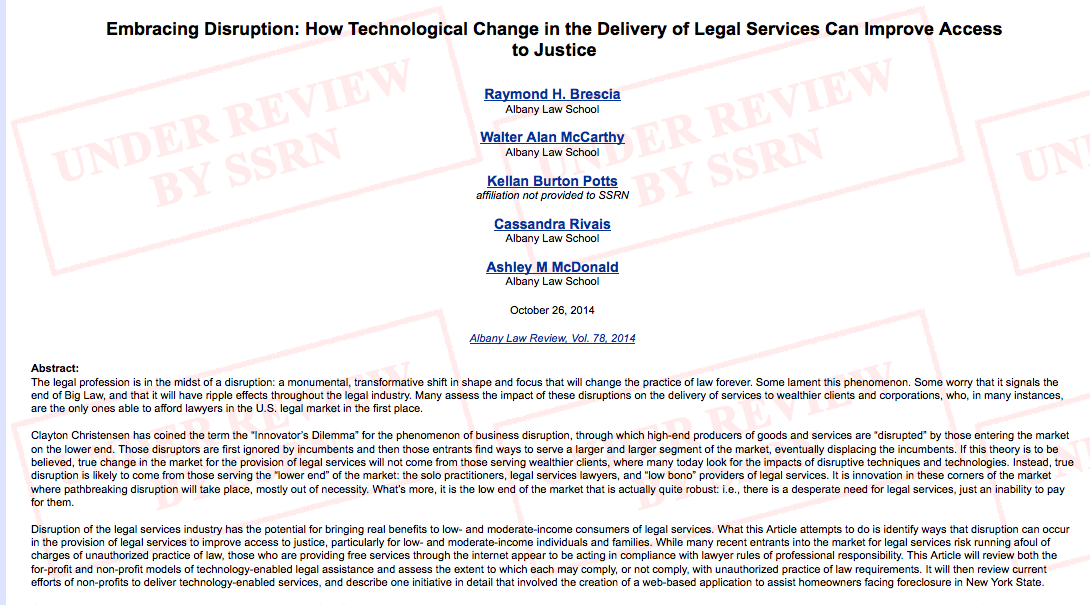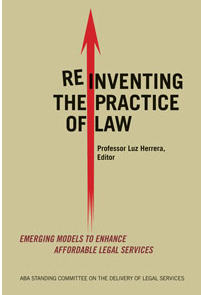Embracing Disruption: How Technological Change in the Delivery of Legal Services Can Improve Access to Justice
Raymond H. Brescia
Albany Law School
Walter Alan McCarthy
Albany Law School
Kellan Burton Potts
affiliation not provided to SSRN
Cassandra Rivais
Albany Law School
Ashley M McDonald
Albany Law School
October 26, 2014
Albany Law Review, Vol. 78, 2014
Abstract:
The legal profession is in the midst of a disruption: a monumental, transformative shift in shape and focus that will change the practice of law forever. Some lament this phenomenon. Some worry that it signals the end of Big Law, and that it will have ripple effects throughout the legal industry. Many assess the impact of these disruptions on the delivery of services to wealthier clients and corporations, who, in many instances, are the only ones able to afford lawyers in the U.S. legal market in the first place.Clayton Christensen has coined the term the “Innovator’s Dilemma” for the phenomenon of business disruption, through which high-end producers of goods and services are “disrupted” by those entering the market on the lower end. Those disruptors are first ignored by incumbents and then those entrants find ways to serve a larger and larger segment of the market, eventually displacing the incumbents. If this theory is to be believed, true change in the market for the provision of legal services will not come from those serving wealthier clients, where many today look for the impacts of disruptive techniques and technologies. Instead, true disruption is likely to come from those serving the “lower end” of the market: the solo practitioners, legal services lawyers, and “low bono” providers of legal services. It is innovation in these corners of the market where pathbreaking disruption will take place, mostly out of necessity. What’s more, it is the low end of the market that is actually quite robust: i.e., there is a desperate need for legal services, just an inability to pay for them.Disruption of the legal services industry has the potential for bringing real benefits to low- and moderate-income consumers of legal services. What this Article attempts to do is identify ways that disruption can occur in the provision of legal services to improve access to justice, particularly for low- and moderate-income individuals and families. While many recent entrants into the market for legal services risk running afoul of charges of unauthorized practice of law, those who are providing free services through the internet appear to be acting in compliance with lawyer rules of professional responsibility. This Article will review both the for-profit and non-profit models of technology-enabled legal assistance and assess the extent to which each may comply, or not comply, with unauthorized practice of law requirements. It will then review current efforts of non-profits to deliver technology-enabled services, and describe one initiative in detail that involved the creation of a web-based application to assist homeowners facing foreclosure in New York State.
Given the need in low- and moderate-income communities for affordable legal services, perhaps disruption in this market has its benefits: at a minimum, it offers a way to improve access to justice for communities and individuals underserved by the present—and expensive—modes of delivering legal services in the United States. This article explores those benefits, but also highlights some of the concerns that arise when technology is used to improve access to justice.



